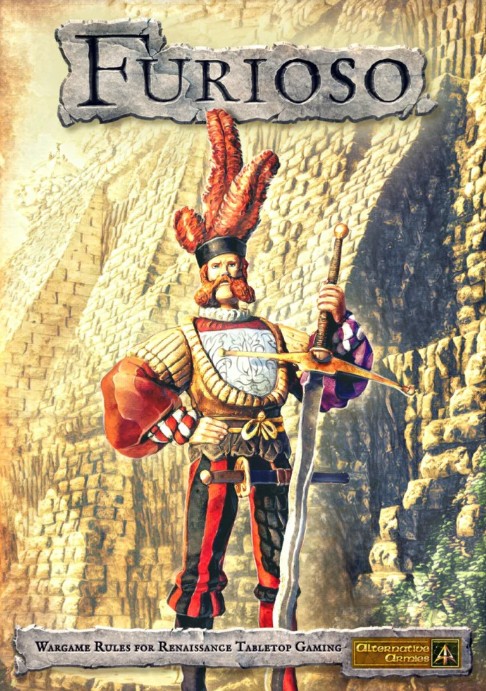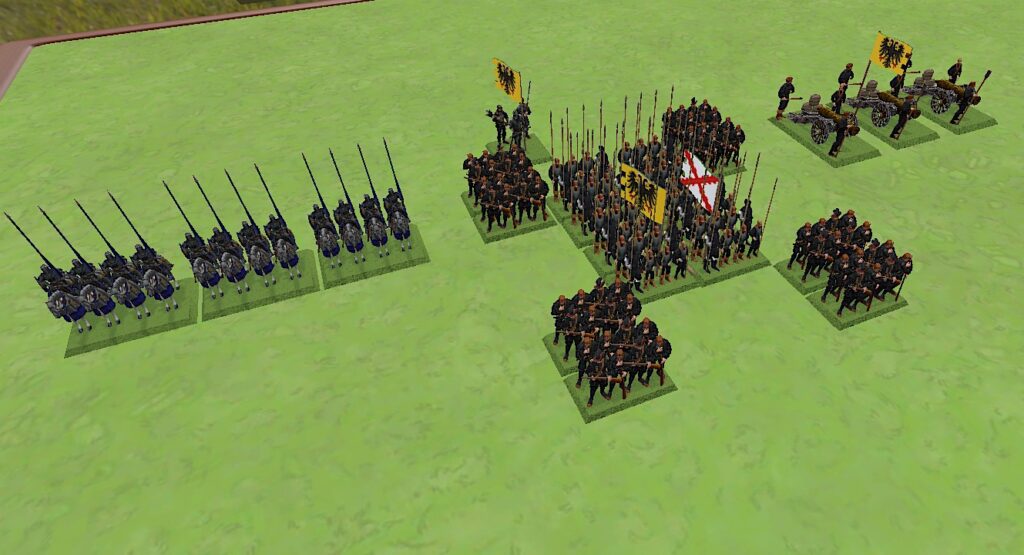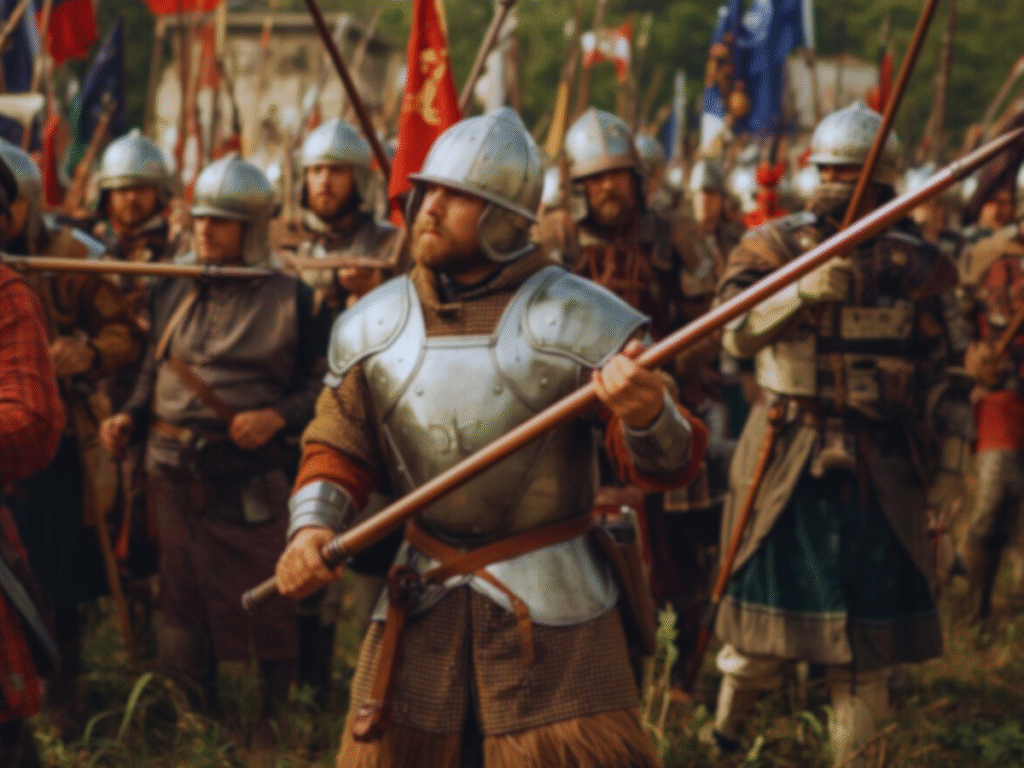The allure of historical wargaming lies in its ability to transport players back to pivotal moments in military history. Among the rich tapestry of historical periods available to enthusiasts, the late medieval/Renaissance era stands as one of the most fascinating transitions in warfare. This period witnessed the gradual shift from knight-dominated battlefields to the emergence of professional armies equipped with early gunpowder weapons and revolutionary tactics. “Furioso,” a late medieval wargames ruleset published in 2017 and dedicated to Renaissance warfare, seeks to capture this dynamic period with its innovative mechanics and historical authenticity.
Overview of Furioso
Furioso positions itself as a comprehensive ruleset for recreating the conflicts that shaped Europe during the 14th to early 17th centuries. The game’s mechanics are built around a command and control system that reflects the challenges faced by commanders of the period. Unlike many other wargames that allow perfect communication and coordination, Furioso introduces friction into the command structure, requiring players to plan carefully and adapt to changing circumstances.
The core of Furioso’s gameplay revolves around an activation system where units must pass command checks to perform actions. This elegantly represents the difficulties of battlefield communication in an era before radio and modern signaling. Higher quality troops and commanders naturally have better odds of successful activation, creating a natural hierarchy on the battlefield that mirrors historical realities.

What truly sets Furioso apart from other late medieval wargames is its treatment of troop types. The ruleset meticulously differentiates between the various forces that defined the era – from heavily armored gendarmes and knights to pike formations, crossbowmen, early musketeers, and artillery. Each unit type comes with distinctive capabilities and limitations that encourage historical deployment patterns and tactics.
The combat resolution system strikes a satisfying balance between simplicity and nuance. Rather than bogging players down with excessive dice rolling or complex tables, Furioso uses an intuitive approach where quality and quantity factors are combined with situational modifiers to determine outcomes. This keeps the game flowing while still allowing for the tactical depth that wargaming enthusiasts crave.
Initial Impressions
My first experience with Furioso left a distinctly positive impression. Setting up a modest encounter between a modern-day Italian condottieri, Alessandro Mella, and myself, I was immediately struck by how the rules guided players toward historically plausible tactics without forcing them into scripted paths.
The command and control mechanics proved particularly engaging. Far from being a frustrating limitation, the activation system created dramatic moments where crucial units either rose to the occasion or faltered at critical junctures. This unpredictability injected genuine tension into the proceedings, with neither player ever feeling entirely secure in their battle plans.
What stood out most was how Furioso handled the ebb and flow of Renaissance combat. The rules elegantly capture the way pike formations dominated open ground yet struggled in broken terrain, how cavalry still possessed shocking power but could be neutralized by disciplined infantry, and how early firearms added an unpredictable element to battlefield equations without becoming anachronistically dominant.
The game’s pace deserves special mention. Despite the detailed representation of period warfare, our battle progressed briskly. This is testament to Furioso’s well-designed mechanics that frontload decision-making rather than calculation. Players will spend their mental energy on meaningful tactical choices rather than number-crunching, resulting in a more immersive experience.
For newcomers to late medieval wargames, Furioso offers a gentler learning curve than many competitors. The core concepts can be grasped within a single play session, though mastering the subtleties of combined arms tactics and optimal unit positioning requires multiple games. This accessibility without sacrificing depth makes Furioso an excellent entry point for those interested in exploring this fascinating period.
Historical Context
The late medieval period represents one of history’s most intriguing military transitions. The era saw the decline of heavily armored knights as the sole arbiters of battlefield supremacy and the rise of disciplined infantry formations and gunpowder weapons. This was the age of the Swiss pike square, the German Landsknecht, the English longbowman, and the Spanish Tercio—all revolutionary developments that fundamentally altered European warfare.
Furioso excels at capturing this pivotal moment in military evolution. The ruleset acknowledges the continued importance of heavy cavalry while recognizing their growing vulnerability to massed infantry and emerging firearms. The game particularly shines in its treatment of combined arms tactics, encouraging players to coordinate different troop types just as the great captains of the Renaissance were learning to do.
The historical authenticity extends beyond mere unit types to encompass command structures and battlefield realities. The wars of the Italian Renaissance, the Hundred Years War, and the conflicts of the Holy Roman Empire were characterized by complex chains of command, often featuring mercenary contingents with questionable loyalty and variable quality. Furioso’s command system reflects these historical dynamics, with mercenary units potentially refusing orders at inopportune moments or displaying unexpected initiative.
By faithfully representing these historical elements, Furioso transforms from a simple game into an educational tool that helps players intuitively understand the military realities of the period. This deeper appreciation for historical context is often what separates the best historical wargames from their more superficial counterparts.
Comparison with Other Wargames
The landscape of late medieval wargames features several established titles, each with distinct approaches to the period. Furioso carves its niche through its balance of accessibility and historical depth. Unlike some competitors that overwhelm players with extensive rule exceptions and special cases, Furioso opts for elegant core mechanics that naturally produce period-appropriate results without excessive complexity.
Compared to more abstracted rulesets like “DBA” (De Bellis Antiquitatis) and its medieval variants, Furioso offers greater granularity in unit types and tactical options without sacrificing playability. Conversely, when measured against detail-heavy systems like “Field of Glory: Renaissance,” Furioso prioritizes gameplay flow over exhaustive historical minutiae.
Furioso’s strength lies in its middle-ground positioning – detailed enough to satisfy history enthusiasts while remaining accessible to casual players. The ruleset’s approach to scale flexibility also deserves mention, accommodating both small skirmishes and larger battles with minimal adjustment. This versatility gives Furioso an edge over more rigidly scaled competitors.
Where Furioso occasionally falls short is in its treatment of naval warfare and siege operations, which receive less attention than field battles. However, this focus allows the core battlefield experience to be polished to a high standard, and many players primarily interested in late medieval wargames will consider this a reasonable trade-off.

The Late Medieval/Renaissance Battlefield Experience
What truly distinguishes Furioso among late medieval wargames is how it captures the psychological aspects of Renaissance warfare. Beyond the mechanical representation of troops and weapons, the rules incorporate morale, fatigue, and command pressure in ways that create narratively compelling battles.
Units in Furioso don’t simply fight until mathematically eliminated – they waver, retreat, rally, and sometimes flee altogether when faced with overwhelming odds or demoralizing circumstances. This human element transforms game pieces into believable military formations, each with their breaking point and moments of unexpected courage.
The terrain interactions further enhance this battlefield realism. The effectiveness of various troop types changes dramatically based on whether they’re fighting in open fields, forests, urban environments, or hilly terrain. These distinctions encourage thoughtful deployment and maneuver rather than simplistic frontal assaults, rewarding players who study historical tactics.
Perhaps most satisfying is how Furioso handles the period’s transitional nature. The rules don’t arbitrarily assign dominance to any single troop type, instead creating a complex ecosystem where each has situational advantages. Early firearms and cannon are appropriately unreliable yet potentially devastating; cavalry remains powerful but vulnerable to prepared infantry; artillery is cumbersome but game-changing when properly deployed. This balanced approach ensures that late medieval wargames played with Furioso feel authentic to the period’s military realities.

Conclusion
After a couple of games played under the Furioso ruleset, I’ve come to appreciate its thoughtful approach to late medieval wargames. The system successfully walks the tightrope between accessibility and historical depth, creating an experience that entertains while educating.
For wargamers already interested in Renaissance warfare, Furioso offers a fresh perspective with its emphasis on command challenges and psychological factors. For newcomers to the period, the ruleset provides an excellent entry point that conveys the unique character of late medieval combat without overwhelming complexity.
The true measure of any historical wargame is whether it leaves players with a deeper understanding of its subject matter. By this standard, Furioso excels – after commanding pike squares, gendarmes, and early cannoneers under these rules, one gains intuitive insights into the tactical problems faced by commanders of the era.
As the hobby of historical wargaming continues to evolve, rulesets like Furioso demonstrate that sophistication need not come at the expense of playability. For anyone with an interest in the colorful and pivotal conflicts of the late medieval period, Furioso deserves a place on their gaming table – offering both an entertaining challenge and a window into one of history’s most fascinating military transitions.
Side note: As a ‘gateway’ from the Warhammer and fantasy gaming genre, Furioso might make the perfect ‘bridge’ to historical gaming.
Whether recreating the brutal efficiency of Swiss pikemen at Novara, the thunderous charges of French gendarmes at Fornovo, or the revolutionary combined-arms tactics of the Spanish at Cerignola, Furioso provides the tools to bring these pivotal moments in military history back to life. As late medieval wargames continue to attract enthusiasts, Furioso stands as an exemplary interpretation of the complex and fascinating era of the late medieval and the Renaissance.
What to read next? – If the Late Medieval/Renaissance time period is not calling to you, you will find suggestions for many different time periods in this previous article.
Want to give Furioso a try? Go to Tabletop Simulator and subscribe to this Workshop Item – Furioso – The Battle of Ceresole


